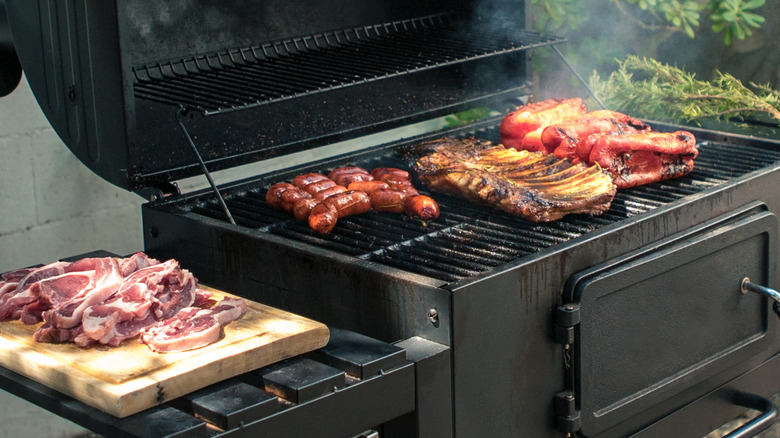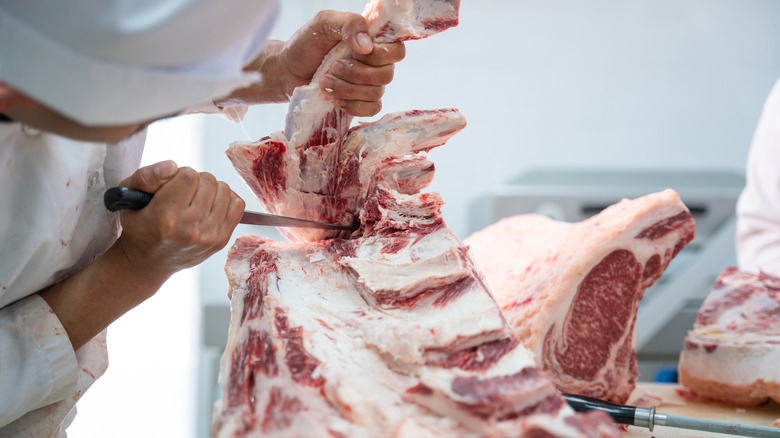The One Knife You Need For Prepping Grilled Meat
Whether you're breaking down a chicken, spatchcocking a turkey, trimming the fat from a tenderloin, or removing the bone from a pork chop, finding the right tool for these tasks can be a bit daunting. Most assume when working with meat that a regular kitchen knife or chef's knife is best. However, there are different knives for different tasks, and reaching for any 'ole kitchen knife could turn your beautiful piece of meat into ragged mush.
When it comes to grilling meat, the prep work is just as important as its time on the flames. For starters, you can't grill meat without first adding flavor. You can rub it with spices, soak it in a delicious marinade, or simply sprinkle it with salt and pepper. Next, let's talk about tools. While chef's knives are a kitchen essential, they are best for cutting meat and chopping vegetables. And a santoku knife is best for mincing herbs or slicing vegetables into thin slices.
But when you're working with high-quality meat, it's best to choose a proper knife that will achieve clean cuts when removing the bone, frenching a steak, or even trimming the fat. A boning knife is best, as it allows you enough precision to neatly cut the meat away from the bone and even filet fish.
Use a boning knife
A boning knife is a crucial tool for properly preparing your meat for the grill. When frenching the bones on the end of a rib or chop, the sharp edge gives you enough control to go exactly where you need to. And from a knife-safety standpoint, it's best to keep your knives as sharp as possible to avoid any messy sawing, uneven slices, or risk of cutting yourself. These particular knives are known for penetrating meat and tearing through ligaments and connective tissue in order to release the raw meat with ease. However, the shape is unique for specific reasons, and there are different types.
The curve boning knife is there in order to easily remove the skin from fish of all sizes, including much smaller fish such as quail that are more tedious. The straight-edge boning knife is for slicing smaller, more fine pieces, along with sculpting meat to your liking. A knife with a flexible blade enables the ability to bend in order to maneuver around edges, corners, and demanding shapes. Stiff-bladed boning knives are best for thick, tougher cuts of meat that need durability to stay the course. Thin-bladed boning knives penetrate the flesh of meat much easier, which allows you to cut more delicate pieces of meat with cleaner incisions. Lastly, broad boning knives are wide, stiff, and sturdy enough to cut thick pieces of meat into the appropriate portions.

